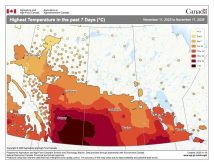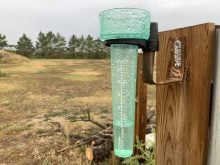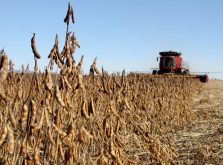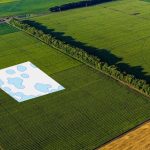Narrow adaptivity Soybeans are particularly sensitive to day length, says an AAFC soy breeder
You can breed soybeans to grow just about anywhere, but whether you’d want to is another question, says an Agriculture and Agri-Food Canada soybean breeder.
Elroy Cober told the recent Manitoba Special Crops Symposium that it’s widely expected that Manitoba will take the No. 2 slot behind Ontario in the coming season. “The short-season areas of Canada are really on a tear right now,” Cober said.
That’s creating interest in the crop farther west into Saskatchewan and Alberta, but breeding varieties for those areas can be tricky. The desire for short-season varieties runs smack into the unique nature of the soybean plant. While other plants respond directly to the amount of heat in a growing season — think corn heat units — soybeans have a more finicky physiology.
Read Also

YEAR IN REVIEW: 2025 a year of weather extremes
Wildfires, drought and flash floods, oh my! Looking back at 2025’s headline-grabbing event in Canada and around the world.
Their flowering response and reaching maturity depends on day length, a feature known as photoperiod sensitivity, Cober said.
“They’re faster to flower in short days which can mean lower yields, and long days delay development,” he said. Both will hit productivity.
This means each line of soybeans has to be adapted to the photoperiod of the particular region it’s being grown in, which varies quickly when moving along a north-south axis.
“There’s a very narrow band of adaptivity running from east to west, where it’s ideally suited,” Cober said. “We see this when we bring a variety from Japan and plant it in Ottawa. It won’t flower until September.”
This means plant breeders have a challenge on their hands — breeding varieties that will be suited to the new growing areas that will be photoperiod appropriate.
“No temperature or maturity genes have been identified,” Cober said. “Only day-length genes have been identified.”
Complex genetics
His use of the plural “genes” isn’t accidental either. So far a total of nine genes which affect photosensitivity have been identified. Some are early genes, some are late, and how they’re combined and interact determines how the plant is adapted to photoperiod.
This abundance of genes that affect photoperiod sensitivity is a double-edged sword. On one hand it means creating varieties with the appropriate photoperiod can be challenging because of more possible combinations. On the other hand it also means there’s plenty of material to work with that can create a near-infinite amount of variability.
“We can develop varieties for Saskatoon, but the question is can it yield enough to compete against cool-season crops like canola or wheat and barley?” Cober said. “It’s not its ideal place. This is a tropical plant and it’s heat adapted.”
Ultimately Cober says it’s the economic competitiveness of the crop that will likely determine just how far into the Prairies soybeans creep, not whether the crop will ultimately be agronomically suited to the area.
Where canola, for example, does well year after year, it’s difficult to see soybeans replacing that crop, especially in the more northerly belt, he suggested.














